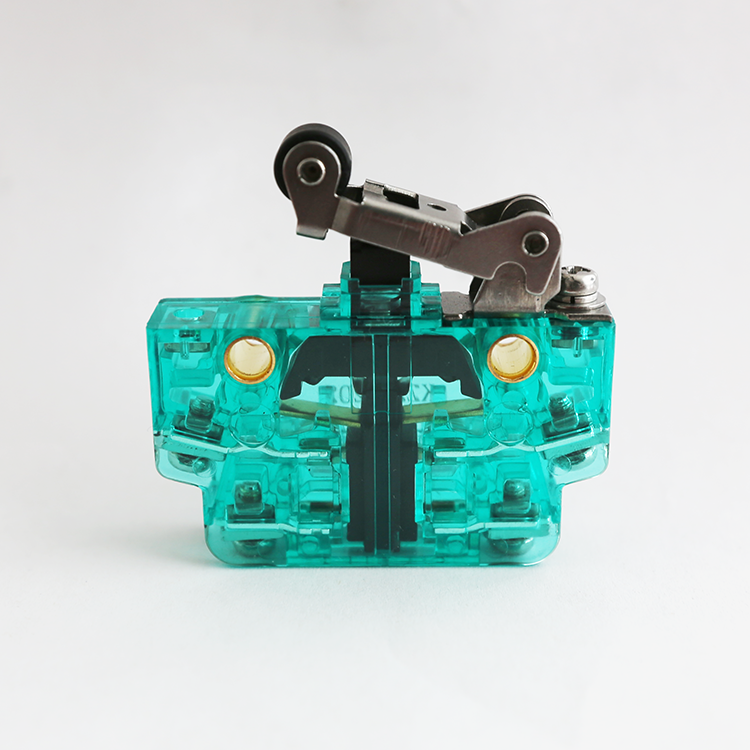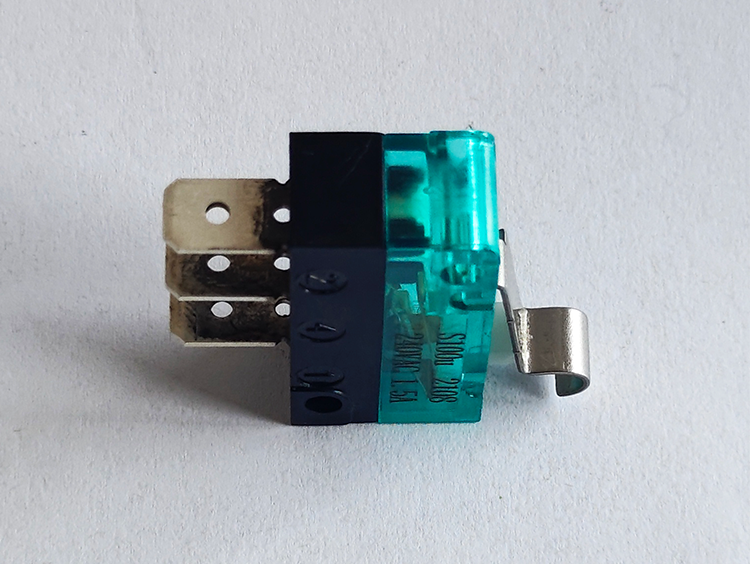

Special requirements for the working environment of microswitches in rail transportation
Release time:2024-07-15
In the vast field of rail transportation, the tacit cooperation of countless precision components is indispensable behind every safe trip. Microswitches, a small and inconspicuous component, play an irreplaceable role in every journey of the train. They are like tiny guardians, silently ensuring the smooth operation of the train and the safety of passengers.
In the automatic opening and closing of the doors, the microswitch senses the position of the door to ensure its safe and accurate opening and closing. It responds quickly to ensure the safe boarding and alighting of passengers, while maintaining the high efficiency of train operation.

The role of microswitches becomes especially critical in train control and signaling systems. As sensors, they monitor the status of various key train components, such as the axle temperature, the braking system and the traction system. On detecting any abnormality, the microswitches immediately cut off the power supply or sound an alarm, thus avoiding potential hazards.
In the special operating environment of rail transportation, microswitches need to meet a series of special requirements. Environmental adaptability is one of its necessary qualities. Whether it is the humid environment underground, the erosion of sand and wind on the ground, or the UV exposure on viaducts, microswitches must be able to adapt to these harsh conditions. Waterproof, dustproof, and temperature-resistant characteristics become its basic threshold, and a high standard of protection is fundamental to its survival. For example, high-temperature microswitches are able to work properly in environments up to 250°C, while explosion-proof microswitches can be used safely in places with explosive hazards.

Response speed is also an indispensable attribute of microswitches. At critical moments such as train startup and braking, a high-speed actuator is better suited to meet the train's need for immediate transmission of control commands. Size is just as important as ease of installation. With the compact space design of rail vehicles, microswitches need to be small enough to be easily integrated and replaced.
In terms of economics, the cost-benefit ratio is a key factor in decision making. The concept of total cost of ownership should be introduced, and a comprehensive evaluation including purchase costs, operating costs and maintenance costs guides us to the most cost-effective microswitch.

Underneath all these requirements, reliability is always the primary consideration in microswitch selection. Any small mistake may cause immeasurable consequences. Therefore, their durability, immunity to interference, and failure rate must be rigorously screened.
Microswitch, though inconspicuous, carries the great responsibility of rail transportation safety and efficiency. In this era of rapid development, we not only want to marvel at the progress of science and technology, but also to those like microswitches, silent work, to protect our daily safety of small components to maintain respect.
In the automatic opening and closing of the doors, the microswitch senses the position of the door to ensure its safe and accurate opening and closing. It responds quickly to ensure the safe boarding and alighting of passengers, while maintaining the high efficiency of train operation.

The role of microswitches becomes especially critical in train control and signaling systems. As sensors, they monitor the status of various key train components, such as the axle temperature, the braking system and the traction system. On detecting any abnormality, the microswitches immediately cut off the power supply or sound an alarm, thus avoiding potential hazards.
In the special operating environment of rail transportation, microswitches need to meet a series of special requirements. Environmental adaptability is one of its necessary qualities. Whether it is the humid environment underground, the erosion of sand and wind on the ground, or the UV exposure on viaducts, microswitches must be able to adapt to these harsh conditions. Waterproof, dustproof, and temperature-resistant characteristics become its basic threshold, and a high standard of protection is fundamental to its survival. For example, high-temperature microswitches are able to work properly in environments up to 250°C, while explosion-proof microswitches can be used safely in places with explosive hazards.

Response speed is also an indispensable attribute of microswitches. At critical moments such as train startup and braking, a high-speed actuator is better suited to meet the train's need for immediate transmission of control commands. Size is just as important as ease of installation. With the compact space design of rail vehicles, microswitches need to be small enough to be easily integrated and replaced.
In terms of economics, the cost-benefit ratio is a key factor in decision making. The concept of total cost of ownership should be introduced, and a comprehensive evaluation including purchase costs, operating costs and maintenance costs guides us to the most cost-effective microswitch.

Underneath all these requirements, reliability is always the primary consideration in microswitch selection. Any small mistake may cause immeasurable consequences. Therefore, their durability, immunity to interference, and failure rate must be rigorously screened.
Microswitch, though inconspicuous, carries the great responsibility of rail transportation safety and efficiency. In this era of rapid development, we not only want to marvel at the progress of science and technology, but also to those like microswitches, silent work, to protect our daily safety of small components to maintain respect.
